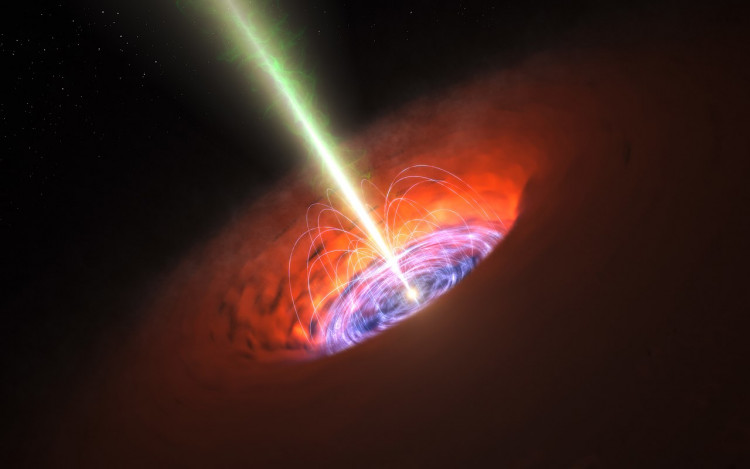Things aren't exactly A-ok on Earth since the beginning of the year, but at least the Sun keeps a safe distance from a black hole and has so far avoided getting sucked into it like a giant noodle of cosmic stuff. But that's exactly what happened, according to scientists, to a star some 215 million light-years from our planet. This star got too close to a black hole, got itself vacuumed, and eventually, "spaghettified."
"The idea of a black hole 'sucking in' a nearby star sounds like science fiction. But this is exactly what happens in a tidal disruption event," said lead author Matt Nicholl, a lecturer and Royal Astronomical Society research fellow at the University of Birmingham. "We were able to investigate in detail what happens when a star is eaten by such a monster."
As the star material plunged into the black hole, most of it blasted back outwards in a pair of extraordinary jets faced in opposite directions, according to observations from instruments at the European Southern Observatory.
The team, who reported their findings in the journal Monthly Notices of the Royal Astronomical Society, also created a simulation of what the tragic incident would look like from up close.
Disturbingly, the star that was devoured was close in scale to our own, but the black hole that sucked it in was even more massive.
Through Stephen Hawking's 1988 best-selling book titled "A Brief History of Time," the idea of being 'spaghettified' after slipping through a black hole was popularized. Hawking pictured an unlucky astronaut who traveled beyond the event horizon and would be exposed to the black hole's powerful gravitational gradient. (The gravitational gradient is the variation in the intensity of the pull of gravity relative to the orientation of an object.)
For example, if the astronaut dropped feet first, the pull would be stronger on the feet than on the head. The astronaut would be vertically extended and flattened downwards by the tidal forces of the black hole until they resembled a spaghetti string. It's the same explanation that Earth faces tides from a physical point of view: the gravitational force from the moon pulls waters one way and flattens them in the other direction. At least it would be fast; in less than a second, that the whole process would occur.
All this is merely hypothetical, the subject of multiple thought experiments. Yet a kind of spaghettification is a true occurrence on the size of stars and galaxies, but one that happens beyond the event horizon of the black hole rather than within. And though not many have been detected to date, these tidal disruption events are presumably very common in our universe.






